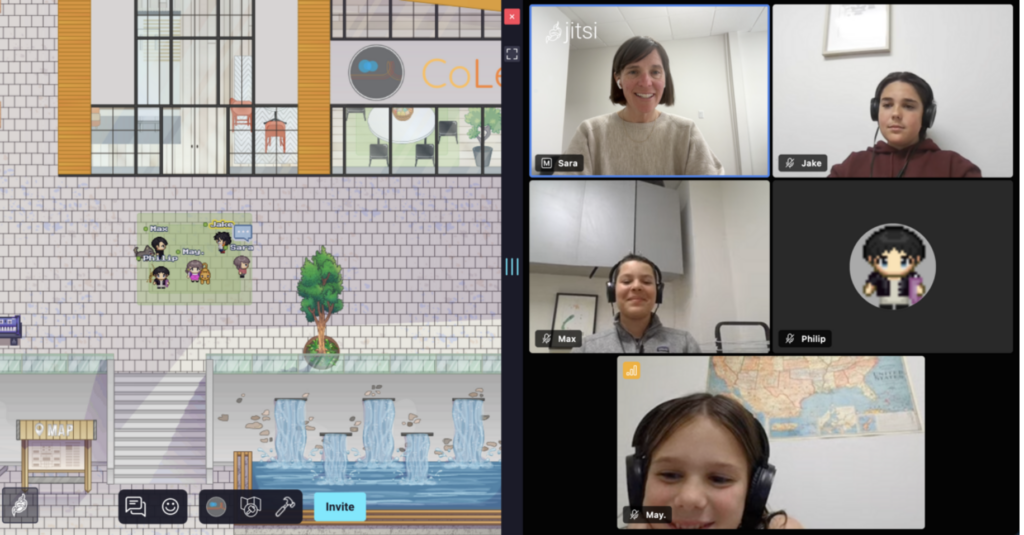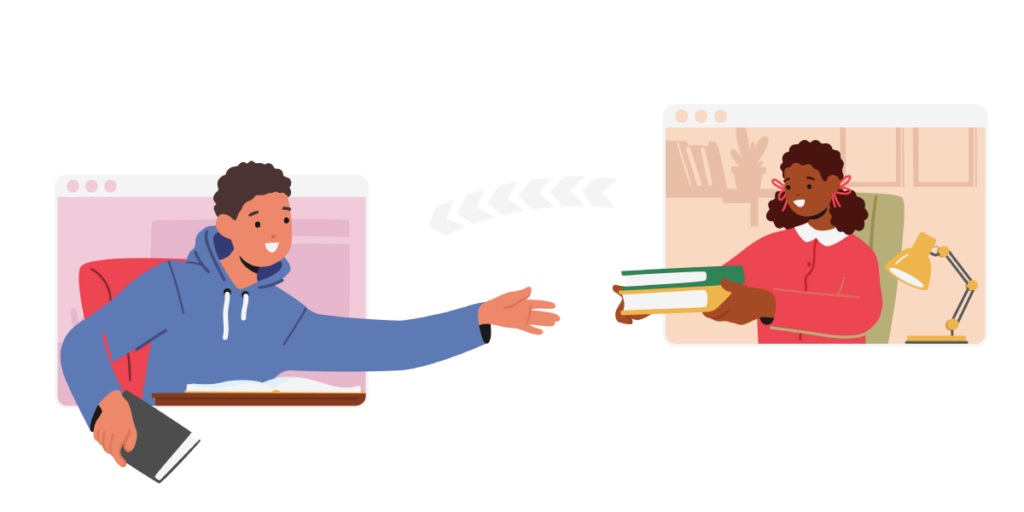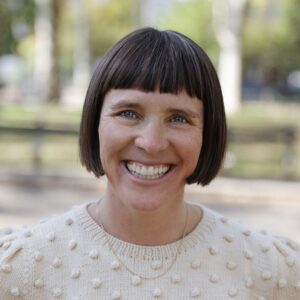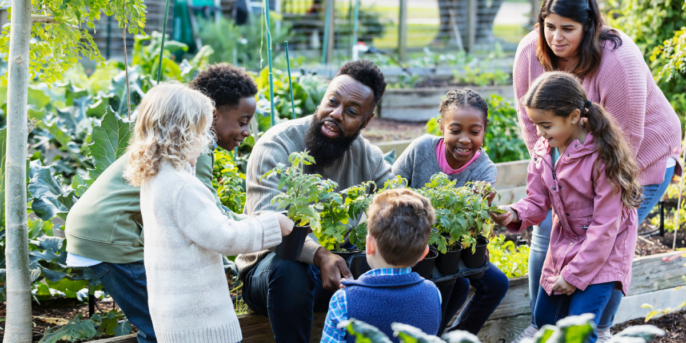Sara Casey Taleff, an educator with more than 20 years of experience, founded Cottonwood and CoLearnCo with the aim of revolutionizing learning. Delve into her journey, where we discuss the urgent need for collaboration in education, the inception of CoLearnCo, and the innovative strategies shaping the future of learning on virtual platforms. Explore how CoLearnCo’s vibrant virtual space empowers children from diverse backgrounds to craft their educational journey through personalized avatars, reflecting their unique identities and aspirations.
Q: Can you tell us about your journey as an educator?
Sara: My journey began as a teacher with Teach for America in the South Bronx, New York. At that time, I was already contemplating how to impact education at a systems level. From there, I worked for the State Department of Education in Montana. After having my own children, I realized the need to make changes on a different scale rather than simply approaching things from the perspective of education policy. I made the decision to design my own learning center and build the school I envisioned for my own children. That’s how Cottonwood originated and then necessitated the creation of CoLearnCo.
Cottonwood is the nonprofit that I founded and now lead with my husband, Christopher. We operate community learning centers in Montana and Brooklyn, New York. Education at Cottonwood is learner-centered, young people have lots of flexibility in their schedules. Learning is project-based and experiential. We use the community as our classroom on our weekly field adventures. It is an awesome educational experience. However, I am always looking for ways to improve our practices.
Q: What led you to create CoLearnCo?
Sara: CoLearnCo, short for Collaborative Learning Communities, was born out of the challenges I faced while running Cottonwood’s microschools. Our learners were requesting subject-specific teachers and a larger peer network, both challenging for an intentionally small learning environment to provide. Creating a virtual campus and partnering with other micro-learning environments from around the country was my solution to the problem. CoLearnCo serves as our virtual campus to provide more dynamic staff interactions and a broader peer network. Cottonwood’s participation in CoLearnCo is so essential because it gives our young people the larger peer network they were requesting and a diversity of educators to learn from. Now, instead of having a class with five, nine- and ten-year-olds in person, they can be in a class of 15 peers from across the county. Cottonwood kids in 5th–7th grade participate in the virtual space for an hour class period two to four days per week. It has enhanced what I am able to provide as a micro-learning environment.
Q: What values shaped your vision for CoLearnCo?
Sara: We aimed to cultivate a community for kids beyond the confines of our microschool, making community a core value of CoLearnCo. In this virtual space, collaboration takes on a revolutionary form. Unlike static Zoom calls where interaction is limited, in CoLearnCo, kids can freely navigate through different sections of the virtual world to collaborate on shared documents, watch videos, and engage in playful, interactive activities.

Q: How does CoLearnCo facilitate connection among learners and educators?
Sara: On Mondays, learners from all locations gather virtually to explore a central theme from a humanities perspective with an educator based in Montana. Together, they delve into a shared guiding question, examining it through a humanities lens.
Then, on Tuesdays, they reconvene to tackle the same question, this time from a scientific angle, with an educator from Casco Learning in St. Louis. This approach not only exposes learners to diverse expertise from across the country but also fosters interactive learning experiences and meaningful peer connections.
Learners engage in literary discussions, such as exploring “The Tale of Despereaux,” fostering dialogue and getting together during their weekly 45-minute sessions. For our younger learners, our emphasis is placed on nurturing their social interaction and play within the virtual space.
The biggest difference between virtual and in-person spaces is the level of diversity that the virtual campus provides. Kids get to share ideas and learning experiences with learners from all over the country which has the potential to really expand their thinking.
We’re excited that CoLearnCo can offer young people an opportunity to interact with educators and learners outside of their physical environment. In this virtual space, we’ve been able to connect urban and rural learners regularly, which enables accessibility for all kids.
Sara Casey Taleff
Q: In what ways does this virtual learning environment complement in-person interactions?
Sara: It’s the perfect complement, as kids get to meet and interact with their peers both online and in person at their microschools. In this virtual space, our learning center team can support and guide our young learners in a supportive environment.
As we developed CoLearnCo, we recognized the importance of in-person interaction for learners who are participating virtually. We have planned in-person meetups for kids who have been collaborating virtually for the past year. In September, our Brooklyn campus is going to welcome young people from CoLearnCo to New York. Kids will get to travel and spend three days here with us. Then in March, the older learners in the 5th- through 8th-grade will have the opportunity to travel to the Nature Bridge Environmental Science Program campus in Olympic National Park.
They’ll take the learning they’ve done in these unit studies and really get to apply it in real life and with these kids that they have been interacting with virtually. Right now, we feel that it’s essential to have both in-person learning and virtual learning in today’s world.
Q: How does CoLearnCo ensure inclusivity and accessibility?
Sara: We’re excited that CoLearnCo can offer young people an opportunity to interact with educators and learners outside of their physical environment. In this virtual space, we’ve been able to connect urban and rural learners regularly, which enables accessibility for all kids. CoLearnCo supports learners with disabilities too. For instance, we have a learner with limited mobility in our physical space. However, when he participates in CoLearnCo, his mobility is expanded. He has an avatar that allows him to move around the virtual space and interact with peers in more inclusive ways.
Q: Could you tell us more about the customizable tools that CoLearnCo offers?
Sara: The virtual platform allows kids to create their own avatar, choosing features like skin tone, eye color, hair color, outfits, and accessories. Each avatar is linked to their login, making it their unique representation within the virtual environment. This level of customization sparks excitement among the kids as they realize they can leave their mark on the learning space. This personalization then evolves with their interests and desires. The customization options expand further when the kids discover they can also choose companions, such as pets, to accompany them in class. This has led to creative ideas like one learner planning to use a photo of their actual dog as their virtual pet.
Looking ahead, we’re eager to welcome other microschools into this project. As more microschools join and we expand the virtual space, our potential for growth increases. Whether a school specializes in outdoor education or has other unique needs, we’re committed to accommodating them by creating custom buildings tailored to their requirements. The possibilities for growth and customization are endless, and we extend an open invitation for others to join us as we shape this world together.
Q: What advice would you offer to those who are passionate about transforming education like you?
Sara: Keep innovating. Every time you encounter a problem, it’s an invitation to create something to better address the needs we face and collaborate with others. Reflecting on how we’ve brought CoLearnCo to where it is now is truly beautiful. We started with the idea that Cottonwood would have its own virtual campus to connect our locations. However, we soon realized how limiting that was. It didn’t fully address our needs until we began collaborating with others in this movement of reimagining education. We can only achieve this if we work together and support each other.
So keep thinking creatively, and let’s do it together.




